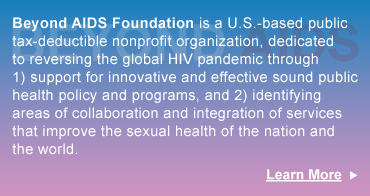No One is Cured
The article below discusses an anticipated steep rise in HIV resistance.
But, what is more significant is a recent article in New England Journal of Medicine, pointing out that triple HIV cocktail therapy (compared to no therapy), extended the lives of people presenting with symptoms of AIDS by only 1.3 years. In other words, on the average, one lives 12 years without ever taking any antiretroviral therapy, and 13.3 years with triple antiretroviral therapy (nevermind all the associated drug toxicity that goes along with treatment).
Put simply, the benefit of antiretroviral therapy is limited. Furthermore, antiretroviral therapy (expensive, toxic, and limited benefit) is available to less then 10% of the world's HIV-infected population. Early this year the NIH recommended not treating for HIV until the CD4 count drops below 350 (with viral load below 50,000 by PCR). In other words, over 70% of all the antiretoviral drugs prescribed in the past 12 years by us experts were unnecessary according to NIH's current recommendations.
Billions of dollars and many lives continue to be wasted.
At the same time we finally acknowledge the limitation of therapy, we continue to hamper all public health efforts to prevent new infections. Partner notification is in shambles. Reporting HIV to public health officials in California can land a physician in jail for 6 months. Only two states require routine prenatal HIV screening----even though we can prevent 70% of newborn infections by identifying the HIV-infected pregnant mother and instituting proper treatment and counseling.
And, don't count on Federal Express to deliver an AIDS vaccine in the next century. We will be lucky if Britan can spare us some smallpox vaccine by 2004.
The article below implies we should start to worry about the upcoming HIV-resistance explosion. What the authors fail to mention is that even without resistance, the virus is never eradicated--- NO ONE IS CURED.
Researchers say drug-resistant HIV on
the rise
LOS ANGELES, Aug 30 (Reuters) - By 2005, nearly half of all HIV patients in San Francisco will not respond to drugs now used to treat the disease, due mostly to inaccurate use of those drug regimens by doctors, a study reported on Thursday. Researchers at the San Francisco and Los Angeles campuses of the University of California used a mathematical model to understand the evolution of drug-resistant HIV strains in the San Francisco gay community from 1996 to 2001.
Drug-resistant HIV arises when people who are already infected fail to respond to their treatment and when those AIDS cases have unprotected sex with others. ``We found that the vast majority of new cases come from acquired drug resistance not sexual transmission,'' Sally Blower, lead author of the study and UCLA professor of biomathematics, told Reuters. Many AIDS patients have had great success with so-called drug cocktails using highly active anti-retroviral therapies, but HIV can develop resistance to these drugs and their long-term effectiveness is not known. The drug cocktails are also less effective when complicated treatment schedules are not followed and failure to adhere to these schedules can increase the potential for future drug resistance. ``The glib answer to the trend is non-compliance on the part of patients, but there are many other factors,'' Blower said. She noted that some AIDS patients have access to state-of-the-art specialty treatment centers, while many others look to general practitioners or other medical centers for care. ``It is because of the way the health-care system is set up in this country,'' she said. In a report published in the September issue of Nature Medicine, her team found that the number of drug-resistant HIV cases has already reached epidemic proportions in San Francisco, rising from some 3 percent of overall cases in 1997 to a projected 42 percent in 2005.
They estimated that transmission from one person to another accounted for just 8 percent of new drug-resistant infections last year, and that percentage will rise to 16 percent in 2005. The researchers concluded that transmission of drug-resistant strains has not increased, and will not increase, the overall number of new HIV infections. ``You can decrease the amount of acquired drug resistance if you have experts dealing with AIDS patients,'' Blower said. ''These are very complicated medicines and the guidelines for using them are changing all the time.'' She said the results of the theoretical model can be extrapolated to other regions. The model included variables such as the number of drug-sensitive cases, the treatment rates, increases in risky sexual behavior and the rate at which drug resistance emerges during treatment to predict the evolution of 1,000 different strains of drug-resistant HIV.
Blower recommended several ways to minimize the prevalence and transmission of drug-resistant HIV including delaying drug treatment as long as possible in order to maximize the medical benefit and delay side effects. She also suggested creating centralized specialty clinics for treatment, developing more effective treatments and reducing the amount of time a drug-resistant patient is on ineffective therapy. ``The emphasis needs to be on stopping drug resistance in the first place,'' Blower said. REUTERS@ Reut17:00 08-30-01
![]() Return to Archived Articles and Letters
Return to Archived Articles and Letters

